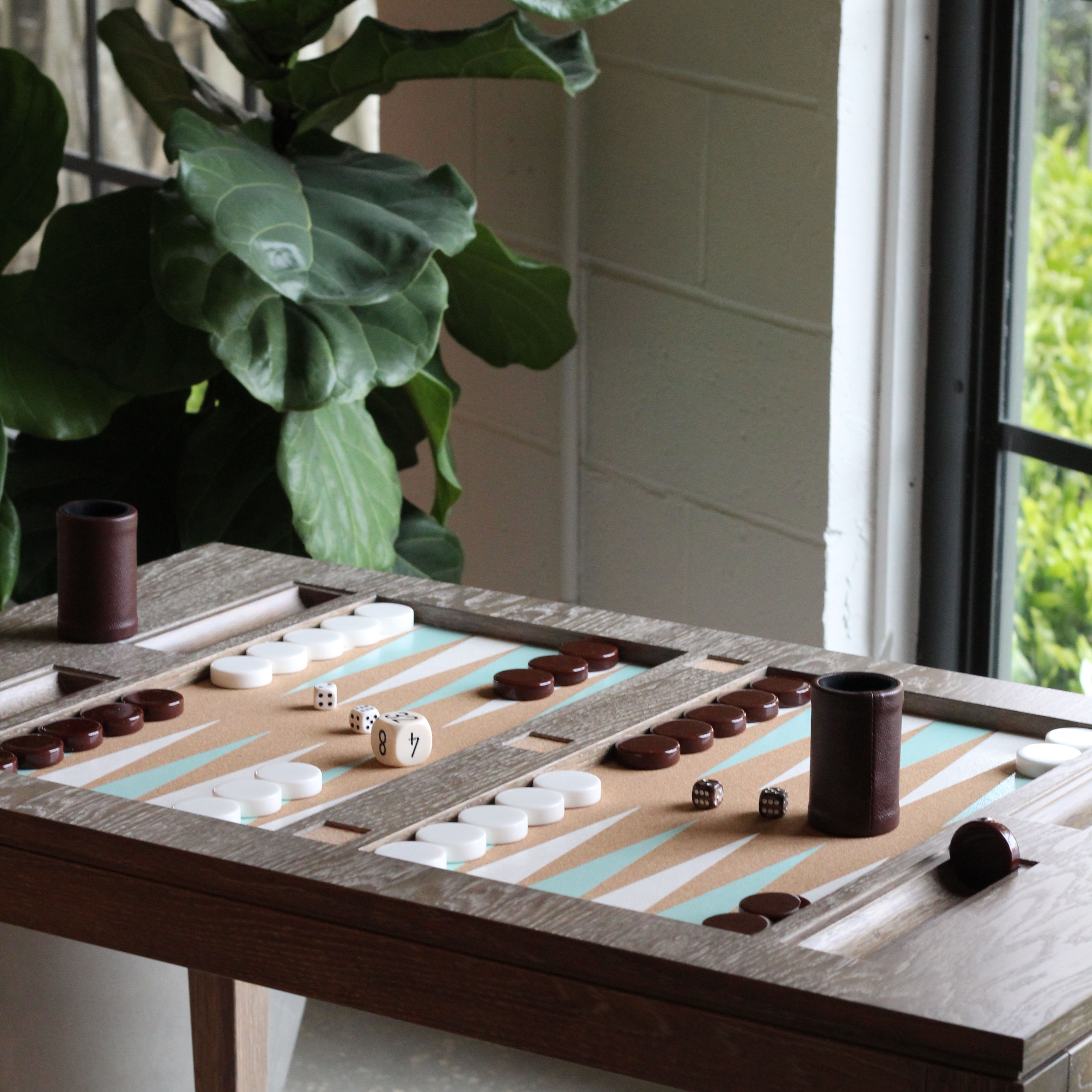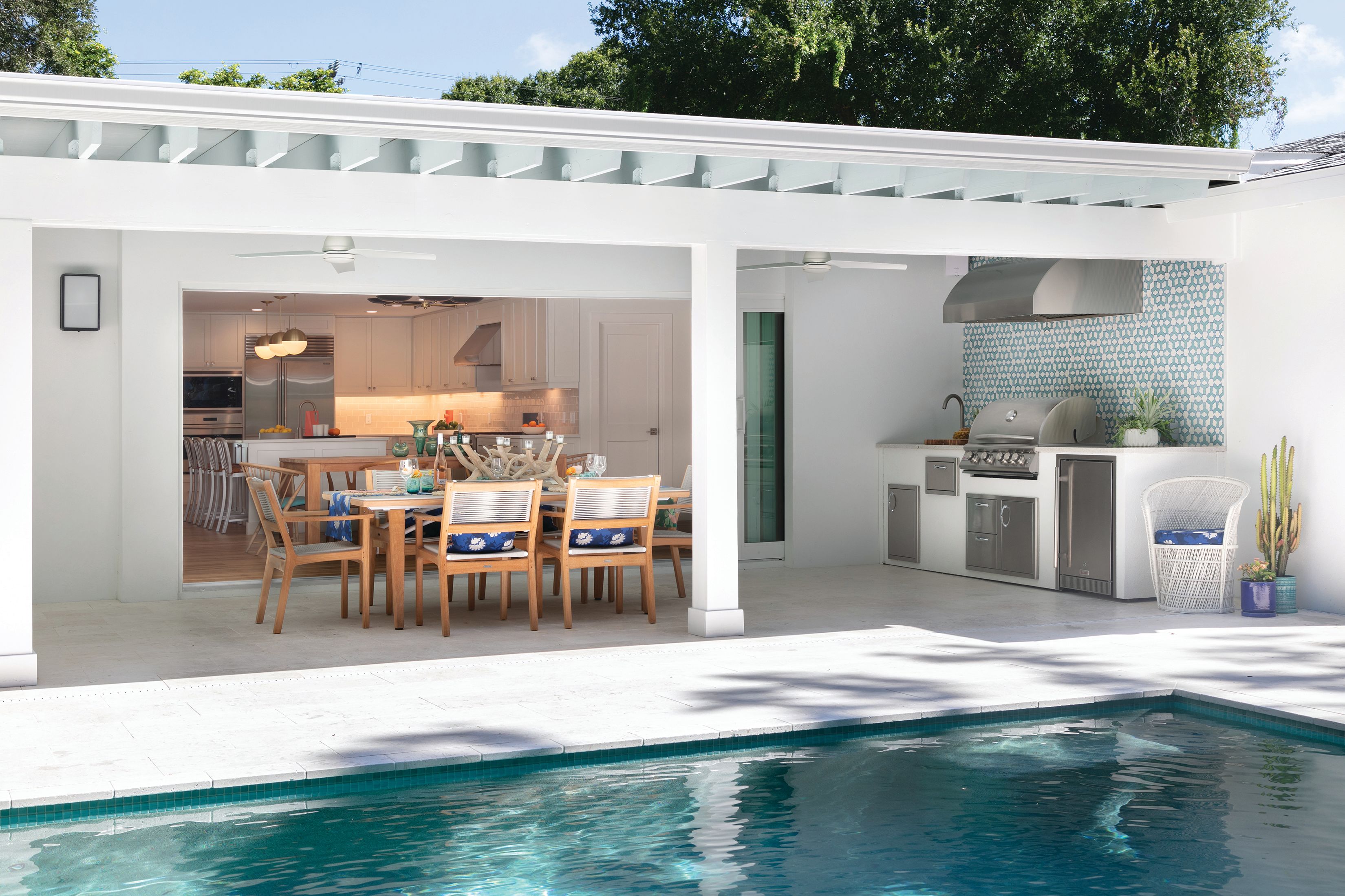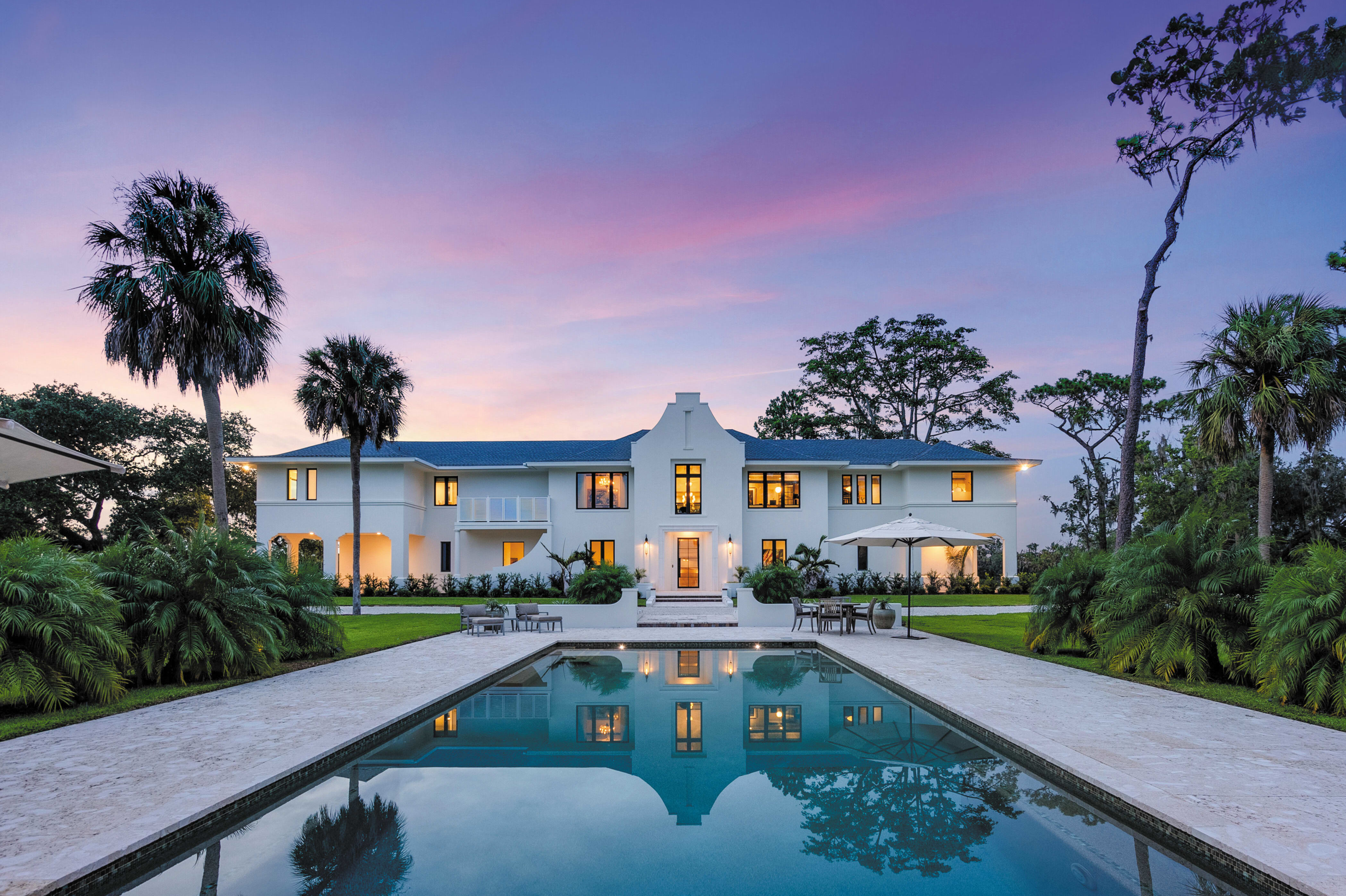A Small Home in a Rapidly Changing Neighborhood Gets a Big, Beautiful Overhaul
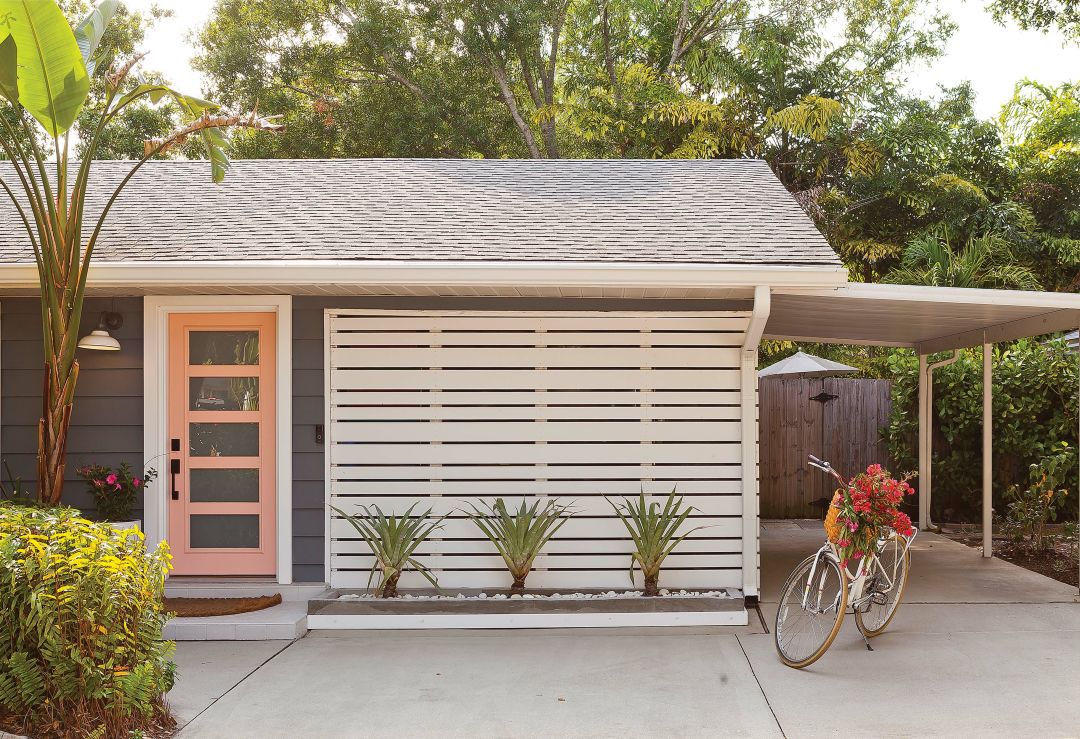
Casey Stephenson's cheerful pink front door pops against her home's dark gray exterior.
Image: Gene Pollux
Paver Park, a small neighborhood located just east of downtown Sarasota, is changing, with a number of big new homes popping up in place of the humble, mostly ’50s Florida ranch homes that have been the neighborhood’s signature look for decades. But one home on South Shade Avenue is bucking the trend, with a graceful redo that adds chic touches while embracing the home’s history.
Casey Stephenson bought the two-bedroom, one-bathroom 1953 home in 2014 for $134,900. “It had floral wallpaper and carpet,” says Stephenson, 39. “But I knew that with new flooring, it was move-in ready.”
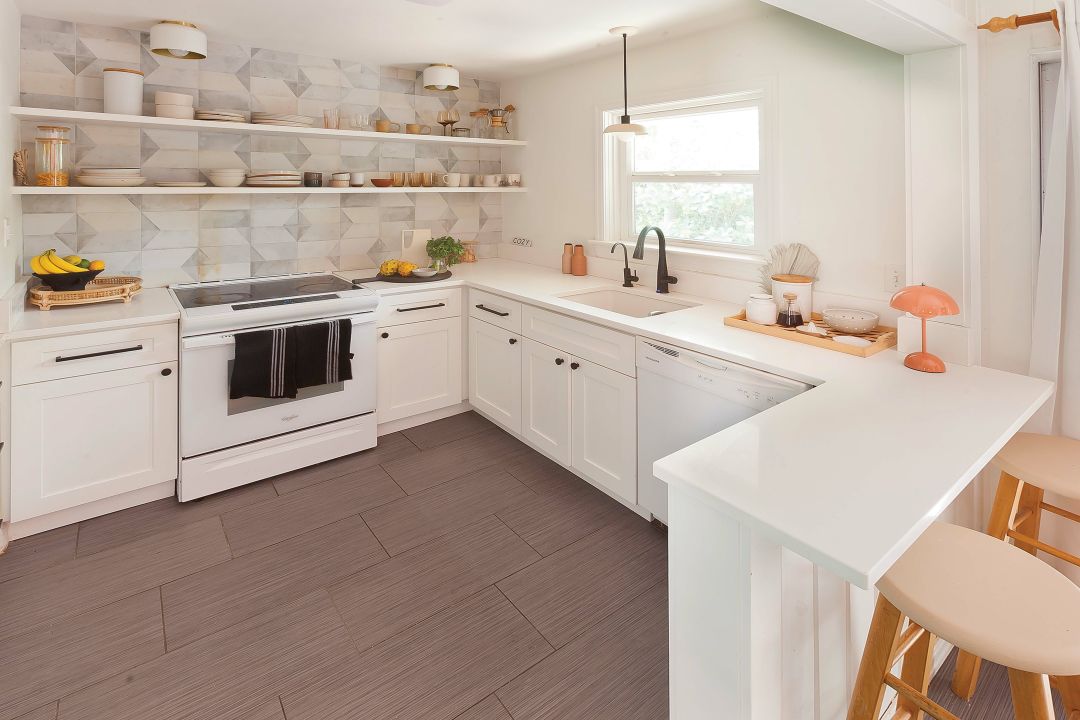
A punched out wall connects the kitchen and the rest of the home and creates an intimate dining bar.
Image: Gene Pollux
No walls in the 816-square-foot home have been added or removed, but Stephenson did open up a door to the previously compartmentalized kitchen and created a small bar, connecting the heart of the home to the greater living space. The original shiplap walls remain, adding warmth. Black hardware pops against white Shaker cabinets, a white countertop and white appliances, and the back wall is tiled in gray-and-white geometric shapes. The main bedroom, meanwhile, is a daring green that might have felt scary going up but gives the room a fresh, fun look that complements the black and white window coverings and the coral spice and sea foam floral-patterned closet covering.
Stephenson also installed new windows and replumbed the home out of its old cast iron and copper pipes. The most recent addition is a new front door with glass cutouts. Painted in a powdery pink, it stands out against bold, dark gray siding that looks so fetching that the neighbors across the street painted their home the same color. Stephenson enclosed the carport, which contains a laundry nook and a few surfboards awaiting beach breaks. The backyard has a shed that could be an art studio, and there’s also an outdoor shower and traveling palms, all fenced in for privacy on the 9,375-square-foot lot—larger than most this close to downtown. The exterior of the home is more than 10 times the size of the interior.
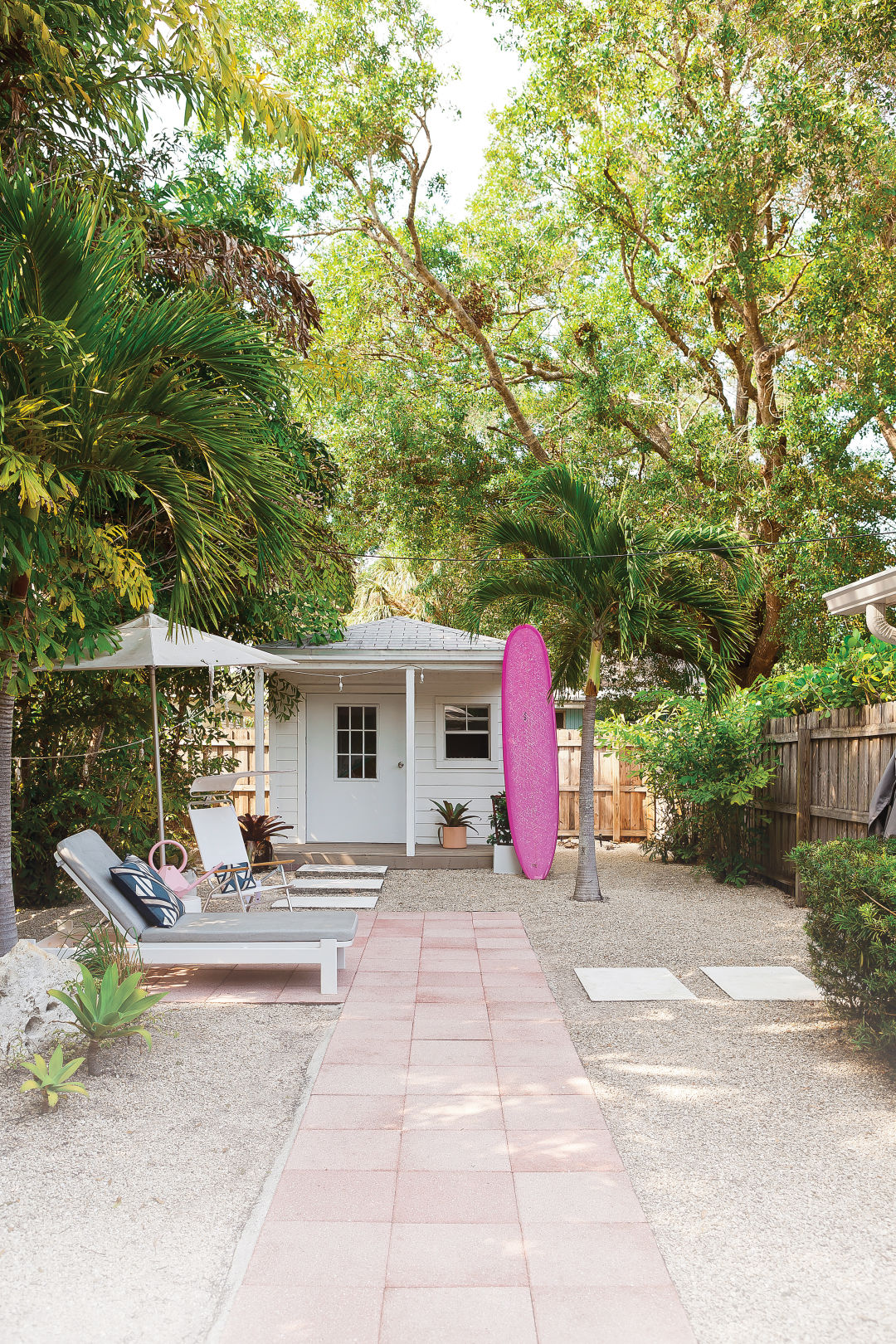
Stephenson's fenced-in backyard is a tropical oasis that creates a private staycation feeling.
Image: Gene Pollux
Down the street, other Florida ranch homes that haven’t had the good fortune of Stephenson’s resurrecting touch are being razed to make way for new construction. Recently, an investor bought two homes and replaced them with large stuccoed houses built by John Cannon Homes, a local luxury builder. They have barrel tile roofs and pools, are built higher and cover more square footage than the homes they replaced. Both lots are close in size to Stephenson’s, but each house now has a footprint that's roughly triple her home.
Last year, one of the homes fetched $1.8 million and the other $1.55 million—unusual price points in a neighborhood largely considered working class. The one that sold for $1.8 million is now a short-term vacation rental that goes for $537 a night or more, depending on the time of year.
“Those two homes, in my opinion, were the best new construction sales in the city the year they sold, because we made a market for new homes at a price point rivaling Arlington Park, where there’s already an established market for that kind of price, and a better school district,” says Seth Westerberg, a realtor with Keller Williams on the Water who focuses on the area.
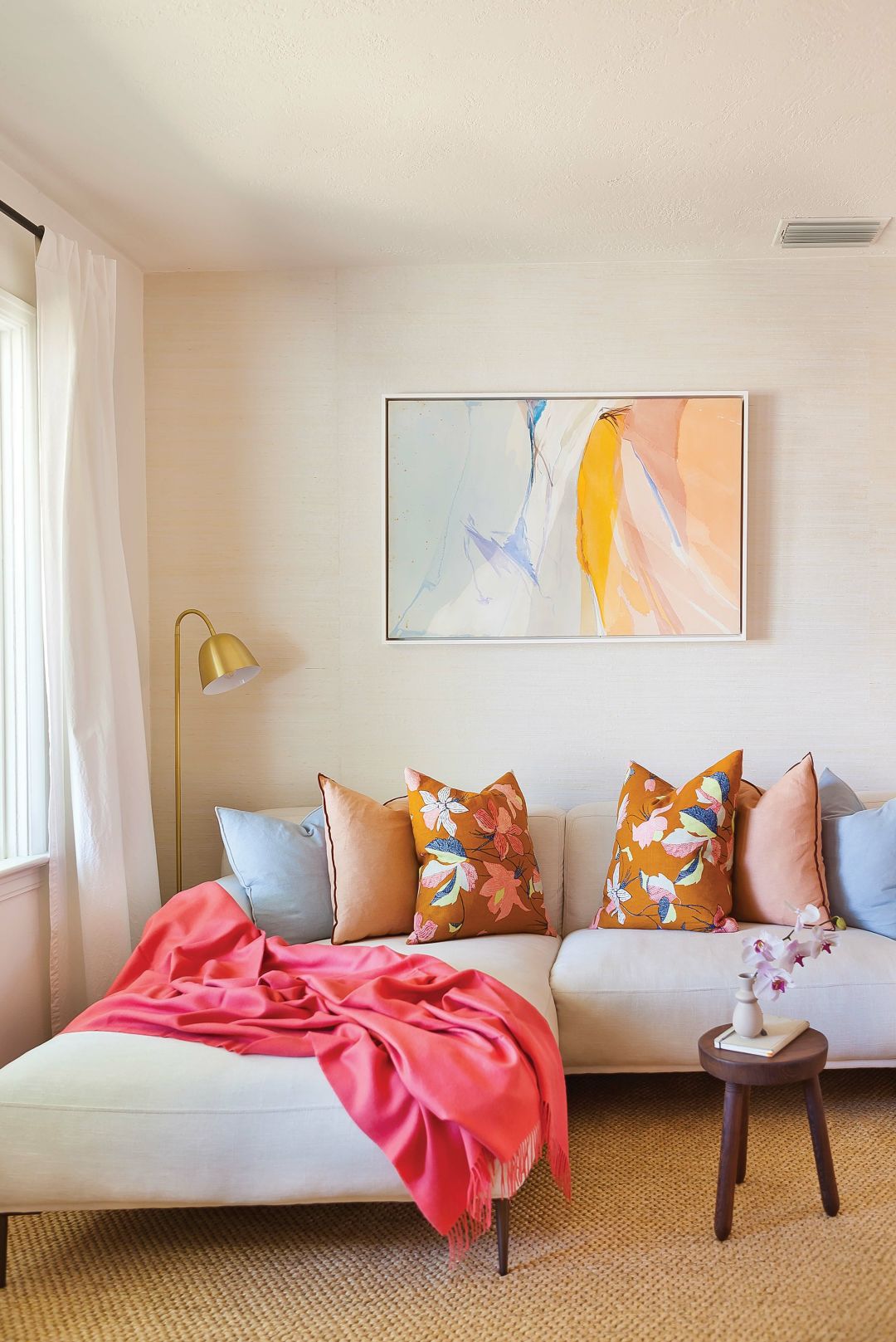
Custom textiles are a splurge that, in a smaller space, yield maximum impact.
Image: Gene Pollux
Two almost identical homes on the same street built by Milano Homes each have two levels, three bedrooms, four bathrooms, two-car garages and a pool. They’re boxy and white, with a portion of the roof set on a slant. One, priced at $1.4 million, is almost complete, and the other, priced at $1.75 million, has yet to break ground. Both are pending. Nearby, you’ll also find a row of charming, if a little scraggly, cottages that may be in peril if the sales of the new builds prove to be a siren song to investors and homeowners who want to live close to downtown and have the money to tear down and build new.
Or, perhaps, someone with Stephenson’s sense of style might bring them back to life. An eye for composition and color comes naturally to her. Growing up, every six months or so, Stephenson’s mother would rearrange the family’s living room to “break up the complacency,” she says. Stephenson later earned a bachelor of fine arts from Ringling College of Art and Design, where she studied illustration and graduated with honors. “I love drawing the figure,” she says. “That’s my happy place.” She still uses a sketchbook to capture her friends, and some of her work can be found on her walls.
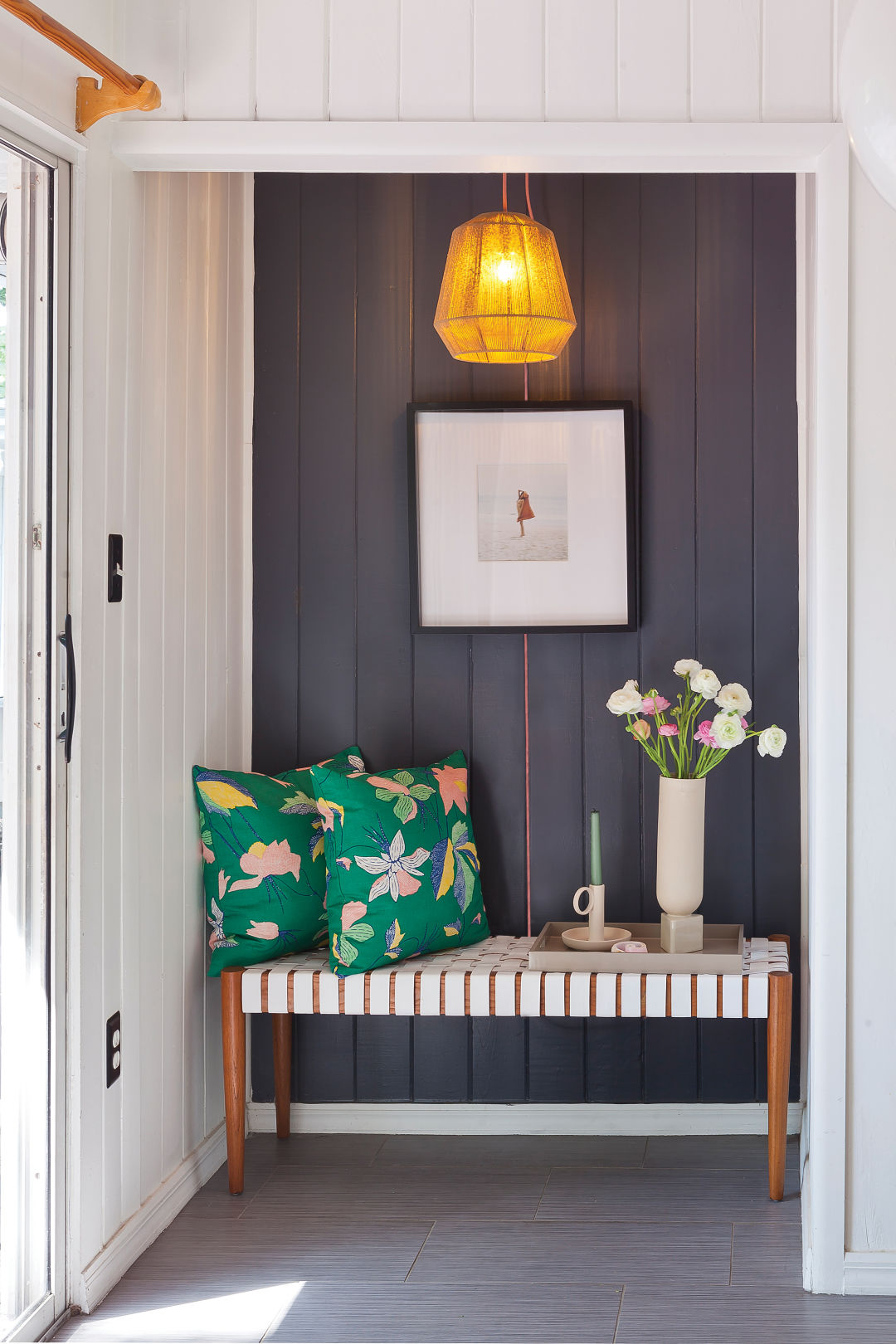
A cozy nook inside Stephenson's home.
Image: Gene Pollux
As the director of Pansy Bayou, a local interior design boutique, Stephenson has worked with textile designer Charlotte Osterman, whose unique patterns are featured at the shop. “I’d buy fabrics from her for pillow covers, window treatments and tissue box covers for customizing, which makes a huge impact in a little house like this,” Stephenson says.
Over the course of nine years, the changes have amounted to a roughly $75,000 investment. The challenge was in weighing where to put the money for the most impact. “I work with clients who have enormous budgets that I don’t and investing in the textiles was a splurge,” she says. “I have a $300 1950s pendant lamp from Tony McCormack, but some Home Depot tile in here, too.”

